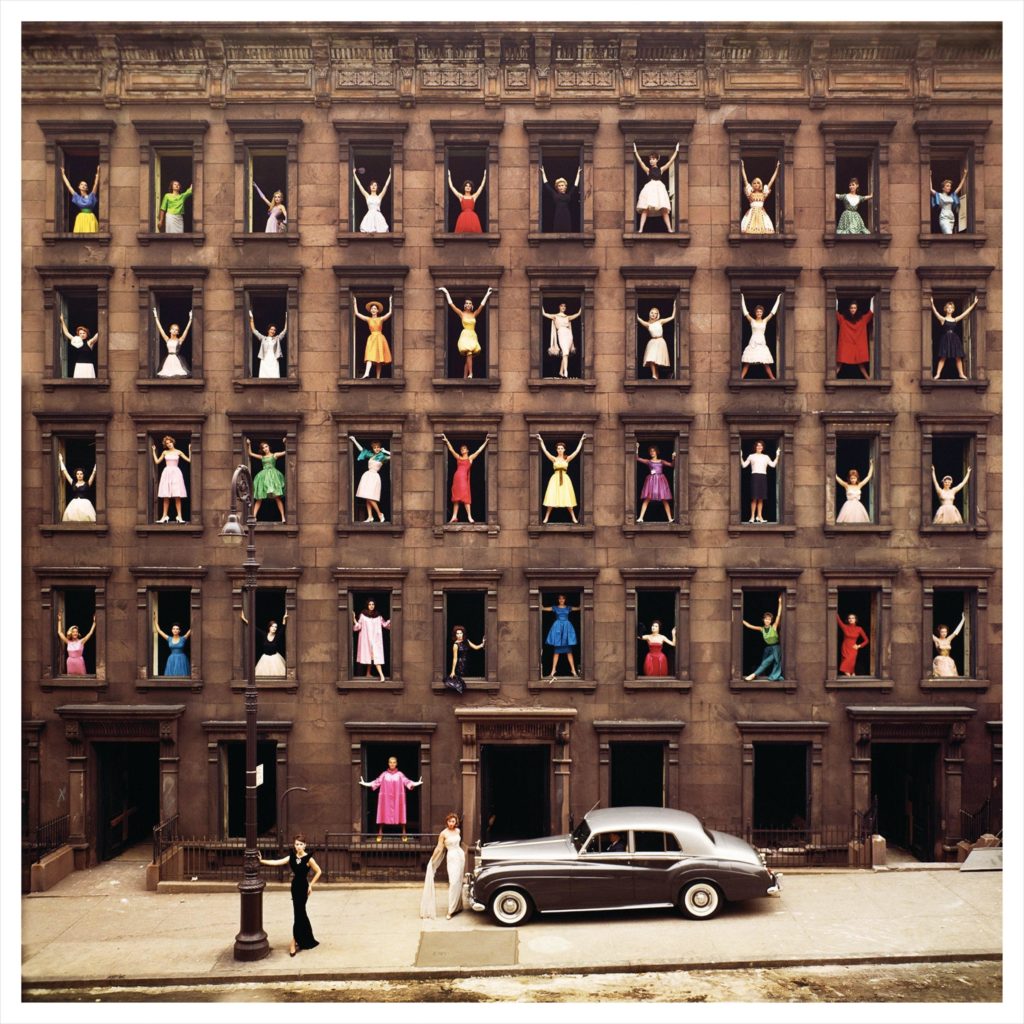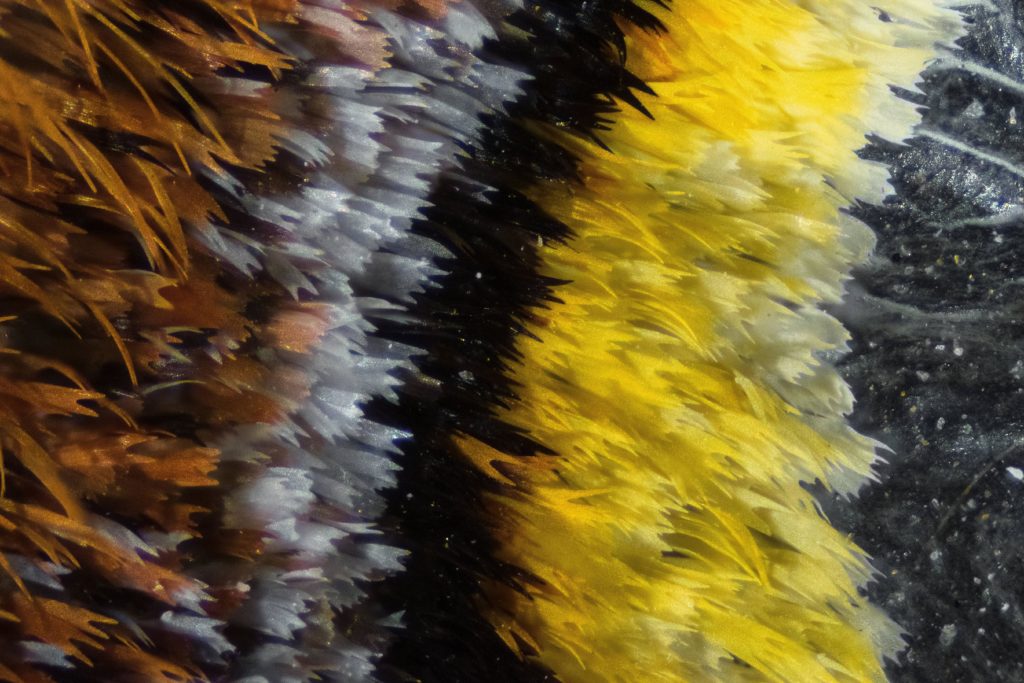Just Interesting
The “glossy magazine” category. Nothing too deep.
2000-year-old Tombstone found recently in a Slovenian river. The inscription says:
Aerius Jucundus, father (set this tombstone) to his 12-year old daughter, Arellia Argolis.
Evoking love and loss 2 millennia later.

I love this, especially the fact that time passing looks like an intense wind blowing around him.
Credit to David Espinosa
Background story from the photographer, Ormond Gigli:
“In 1960, while a construction crew dismantled a row of brownstones right across from my own brownstone studio on East 58th Street, I was inspired to, somehow immortalize those buildings. I had the vision of 43 women in formal dress adorning the windows of the skeletal facade.
We had to work quickly to secure City permissions, arrange for models which included celebrities, the demolition supervisior’s wife (third floor, third from left), my own wife (second floor, far right), and also secure the Rolls Royce to be parked on the sidewalk. Careful planning was a necessity as the photography had to be accomplished during the workers’ lunch time!
The day before the buildings were razed, the 43 women appeared in their finest attire, went into the buildings, climbed the old stairs, and took their places in the windows. I was set up on my fire escape across the street, directing the scene, with bullhorn in hand. Of course I was concerned for the Models’ safety, as some were daring enough to pose out on the crumbling sills.
The photography came off as planned. What had seemed to some as too dangerous or difficult to accomplish, became my fantasy fulfilled, and my most memorable self – assigned photograph. It has been an international award winner ever since.
Most professional photographers dream of having one signature picture they are known for. “GIRLS IN THE WINDOWS ” is mine.”
Pareidolia: A sensory stimulus which is interpreted by the mind as something else. Most famously the faces seen in teapots, trucks, garbage cans and clouds; Jesus on a piece of toast, the cloud that looks like a bunny etc, etc. But also such experiences as being in the shower and in the sound of the running water, hearing your phone or the doorbell ringing.
Besides being funny, these pictures are evidence of two things about us.
- That we all do this, at all times, using whatever sensory data is in front of us. Therefore we are screening all incoming data through a human flavored filter. The sense info here is almost aggressively packaged in human frames. None of us are objective observers, none of us ever will be.
- That it’s similar enough between the random millions of us that we see the same visual punchline almost effortlessly. This automatic consensus supports theories about inner archetypes and symbols, about universals of expression, posture, and gesture. They suggest that the architecture of these inner libraries is innate.
Getting microscopic with some little green friends. Co-starring Tardigrades (water bears)
Ferrofluid is a liquid that becomes strongly magnetized in the presence of a magnetic field. A grinding process for ferrofluid was invented in 1963 by NASA’s Steve Papell as a liquid rocket fuel that could be drawn toward a pump inlet in a weightless environment by applying a magnetic field. Ferrofluids are colloidal liquids made of nanoscale ferromagnetic, or ferrimagnetic, particles suspended in a carrier fluid (usually an organic solvent or water). Each tiny particle is thoroughly coated with a surfactant to inhibit clumping.
When a paramagnetic fluid is subjected to a strong vertical magnetic field, the surface forms a regular pattern of peaks and valleys. This effect is known as the Rosensweig or normal-field instability. The instability is driven by the magnetic field; it can be explained by considering which shape of the fluid minimizes the total energy of the system.
From the point of view of magnetic energy, peaks and valleys are energetically favorable. In the corrugated configuration, the magnetic field is concentrated in the peaks; since the fluid is more easily magnetized than the air, this lowers the magnetic energy. In consequence, the spikes of fluid ride the field lines out into space until there is a balance of the forces involved.
At the same time, the formation of peaks and valleys is resisted by gravity and surface tension. It requires energy both to move fluid out of the valleys and up into the spikes and to increase the surface area of the fluid. In summary, the formation of the corrugations increases the surface free energy and the gravitational energy of the liquid but reduces the magnetic energy. The corrugations will only form above a critical magnetic field strength when the reduction in magnetic energy outweighs the increase in surface and gravitation energy terms.
Ferrofluids have an exceptionally high magnetic susceptibility and the critical magnetic field for the onset of the corrugations can be realized by a small bar magnet. – Wikipedia
Trump kept the book ‘My New Order,’ a collection of Hitler’s speeches on his night table for years.
It all starts to seem a little too on point.
A ‘star drop’ refers to the patterns created when a drop, flattened by some force, is excited into shape mode oscillations
Abstract: “These patterns are perhaps best understood as the two-dimensional analogs to the more common three-dimensional shape mode oscillations. In this fluid dynamics video, an ultrasonic standing wave was used to levitate a liquid drop. The drop was then flattened into a disk by increasing the field strength. This flattened drop was then excited to create star drop patterns by exciting the drop at its resonance frequency. Different oscillatory modes were induced by y varying the drop radius, fluid properties, and frequency at which the field strength was modulated.”
“Shape oscillation of a levitated drop in an acoustic field,” by W. Ran & S. Fredericks (Clemson University, Department of Mechanical Engineering)
Crowd control at a huge event in Japan.

